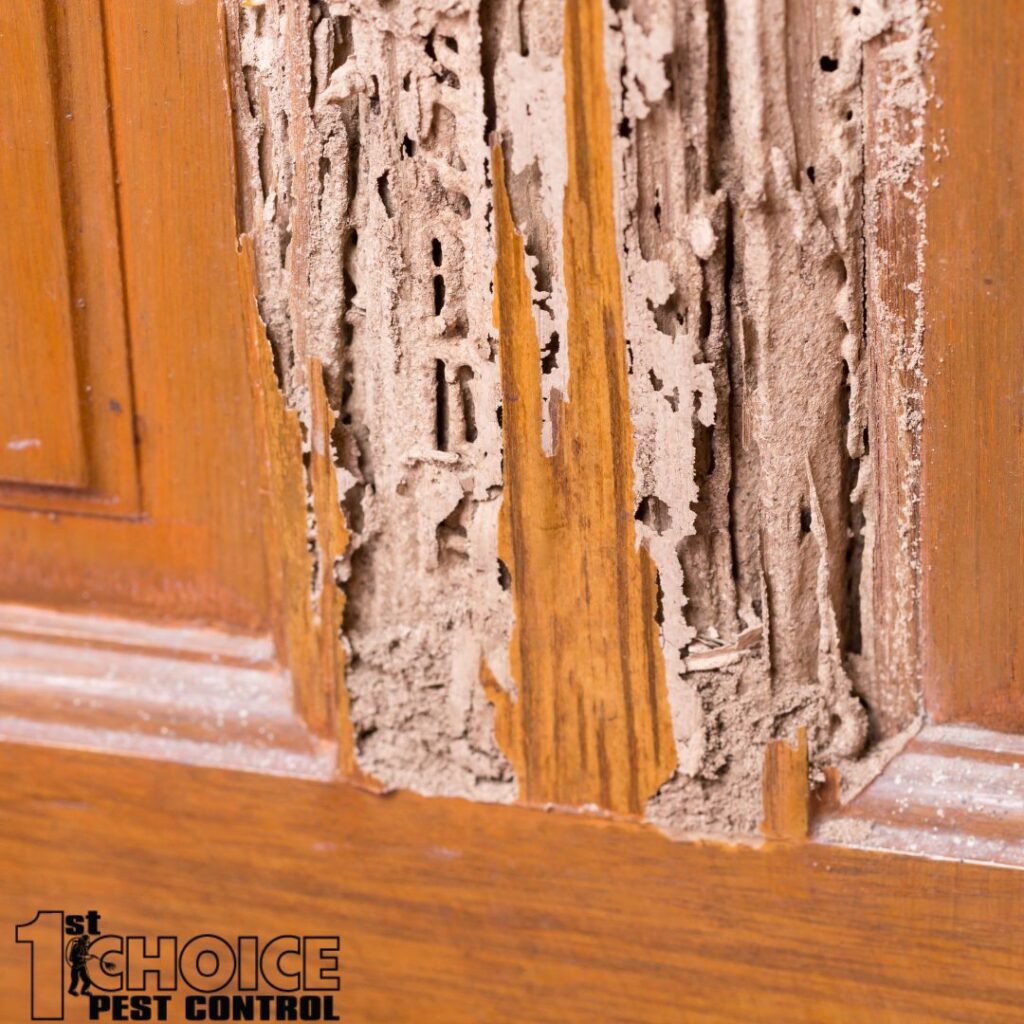Protecting Your Home from Termites: Identifying Indicators, Inspections, and Remedies
Termites, often referred to as “silent destroyers,” are a homeowner’s worst nightmare. These tiny insects can wreak havoc on the structural integrity of your home, causing extensive and costly damage before you even realize they’ve invaded. In this comprehensive guide, we’ll delve into the critical topic of protecting your home from termites, covering everything from recognizing the signs of infestation to the various treatment options available.
Termites, despite their small size, have a voracious appetite for wood and cellulose materials, making them a significant threat to homes and buildings constructed primarily of these materials. As they silently and methodically consume the structural components of your property, the financial implications of termite damage can be staggering.
In this blog, we aim to shed light on the signs that may indicate a termite infestation, the importance of regular termite inspections, and the treatment options at your disposal to combat these destructive pests effectively. By the end of this guide, you’ll be equipped with the knowledge and tools to safeguard your home, ensuring it remains a termite-free haven for you and your family. Don’t wait until you see visible damage; proactive termite protection is your best defense against these insidious invaders.
Understanding Termites
To effectively protect your home from termites, it’s essential to gain a fundamental understanding of these minuscule yet formidable creatures. Termites belong to the order Isoptera and are often divided into several species, with the most common types being subterranean termites, drywood termites, and dampwood termites. Here’s what you need to know about them:
Species and Behavior: Termites play a crucial role in nature by breaking down cellulose, which is found in wood, plant materials, and paper. However, their ecological importance takes a backseat when they infest homes and structures, causing significant damage.
- Subterranean Termites: These are the most common and destructive types of termites. They live underground and build mud tunnels to access their food sources. Subterranean termites are particularly challenging to detect early because they remain hidden beneath the soil or within wooden structures.
- Drywood Termites: Unlike subterranean termites, drywood termites do not require contact with soil. They infest dry, seasoned wood and create colonies within the wood itself. These termites can be challenging to spot until damage becomes visible.
- Dampwood Termites: Dampwood termites are attracted to moist wood, typically found in decaying logs or water-damaged structures. While they are less common in homes, they can still cause damage in the right conditions.
Attraction to Wood and Cellulose: Termites are drawn to cellulose-rich materials, primarily wood, but also paper, cardboard, and plant-based debris. Their digestive systems are equipped with microorganisms that break down cellulose, allowing them to extract nutrients from these materials.
Silent Destruction: One of the most concerning aspects of termite infestations is their ability to cause damage discreetly. Termites feed from the inside out, leaving the outer surface of wood intact. This means that by the time signs of infestation become visible, significant structural damage may already exist.
Understanding the behavior and biology of termites is the first step in protecting your home from these pests. In the following sections of this guide, we will delve deeper into recognizing the signs of termite infestations and the importance of regular inspections to detect and address termite problems promptly. By being well-informed about termites and their habits, you can take proactive measures to safeguard your home from potential devastation.
Signs of Termite Infestations
Recognizing the signs of termite infestations is crucial for early detection and effective pest management. Termites are notorious for causing extensive damage before their presence becomes obvious. Here are the common signs homeowners should be vigilant about:
1. Mud Tubes and Tunnels: Subterranean termites build mud tubes to protect themselves from dry conditions and predators while they travel between their underground nests and food sources. These pencil-thin, mud-colored tubes are often visible on foundation walls, crawlspaces, and wooden structures.
2. Hollow-Sounding Wood: Tap on wooden surfaces in your home, such as walls, floors, or structural beams. If the wood sounds hollow or papery, it may indicate termite damage. Termites hollow out wood from the inside, leaving a thin layer of timber on the surface.
3. Discarded Wings: After a termite colony reaches maturity, it produces swarmers or alates, which are winged reproductive termites. Discarded wings near windowsills, doors, or light fixtures can be a sign of a termite swarm, especially during the spring or early summer.
4. Swarmers (Winged Termites): During their swarming phase, termites emerge from their colonies in search of mates and new places to establish nests. If you see flying termites inside your home, it’s a strong indication of an active termite infestation.
5. Frass (Termite Droppings): Termites create tiny pellets or droppings known as frass when they feed on wood. These frass piles may resemble small piles of sawdust or resemble pepper and can often be found near termite entry points.
6. Sagging or Buckling Wood: Infested wooden structures may start to show signs of sagging, buckling, or even distortion due to the weakening caused by termite damage.
7. Tightening of Doors and Windows: As termites consume and damage structural components like door frames and window sills, you may notice that doors and windows become harder to open and close smoothly.
8. Small Holes or Cracks in Wood: Tiny holes, cracks, or tunnels on wooden surfaces can indicate termite activity. These openings are often the entry and exit points for termites.
9. Accumulation of Termite Mud: Subterranean termites often leave mud accumulations near the entry points of structures. These mud deposits are used for maintaining moisture levels and can be an obvious sign of an infestation.
Being vigilant and promptly addressing any of these signs is crucial to preventing extensive termite damage. If you suspect a termite infestation in your home, it’s advisable to consult with a professional pest control expert for a thorough inspection and evaluation of the situation. In the following sections, we’ll delve into the importance of regular termite inspections, both DIY and professional, to maintain a termite-free home.
Importance of Regular Inspections
Termite infestations can go unnoticed for extended periods, causing substantial damage before homeowners become aware of the problem. That’s why regular termite inspections are critical for early detection and prompt action. Here’s why they should be an essential part of your home maintenance routine:
1. Early Detection Saves Money: Termite damage can be expensive to repair. By identifying and addressing infestations early, you can save yourself from the financial burden of extensive repairs.
2. Prevents Structural Damage: Termites can compromise the structural integrity of your home. Regular inspections help prevent severe damage that could lead to safety hazards.
3. Preserves Property Value: A termite-free home maintains its value. If you plan to sell your property, regular termite inspections and a clean bill of health can enhance its marketability.
4. Peace of Mind: Knowing that your home is regularly inspected for termites provides peace of mind. You won’t have to worry about hidden infestations causing havoc.
5. Maintains Home Insurance Coverage: Some homeowner’s insurance policies may not cover termite damage. Regular inspections and preventive measures demonstrate your commitment to protecting your home.
DIY Termite Inspections
While professional inspections are essential, homeowners can also conduct preliminary inspections to stay vigilant. Here are the steps for a DIY termite inspection:
- Check for Mud Tubes: Examine the foundation and crawlspaces for mud tubes, especially in areas where wood meets the ground.
- Tap Wooden Surfaces: Carefully tap wooden surfaces with a screwdriver or mallet. Listen for hollow sounds, which could indicate termite damage.
- Inspect Windows and Doors: Look for tight-fitting doors and windows, as this may suggest termite damage to the frames.
- Examine Wooden Structures: Inspect wooden decks, fences, and other structures near your home for signs of termite activity.
- Check for Frass: Keep an eye out for termite droppings (frass) or small piles of sawdust-like material.
Professional Termite Inspections
While DIY inspections can provide some peace of mind, they are no substitute for professional inspections. Professional pest control experts have the training and equipment needed to conduct thorough inspections. They can identify signs of termite activity that may be hidden to the untrained eye.
Professional inspections are typically recommended annually, especially in areas with a history of termite infestations. If you live in a region prone to termites or suspect an infestation, it’s best to consult with a licensed pest control company. They can provide a comprehensive inspection, identify any existing problems, and recommend appropriate treatment options if necessary.
Termite Treatment Options
If a termite infestation is confirmed, there are several treatment options available, depending on the severity of the problem and the termite species involved:
- Chemical Soil Treatments: These treatments create a protective barrier around your home’s foundation, preventing termites from entering or leaving the structure.
- Baiting Systems: Bait stations are strategically placed around your property. Termites ingest the bait and take it back to the colony, effectively eliminating the entire colony.
- Fumigation: In severe infestations, tenting your home and fumigating the structure may be necessary to eliminate termites.
- Wood Treatments: Infested wooden structures can be treated directly with termiticides to kill termites and protect the wood.
The choice of treatment depends on various factors, including the extent of the infestation, termite species, and your preferences for eco-friendly options.
In conclusion, protecting your home from termites involves understanding their behavior, recognizing the signs of infestations, conducting regular inspections, and taking appropriate action when needed. By being proactive and enlisting the help of professionals when necessary, you can ensure that your home remains a termite-free sanctuary, preserving its value and structural integrity for years to come.



 Service Request
Service Request